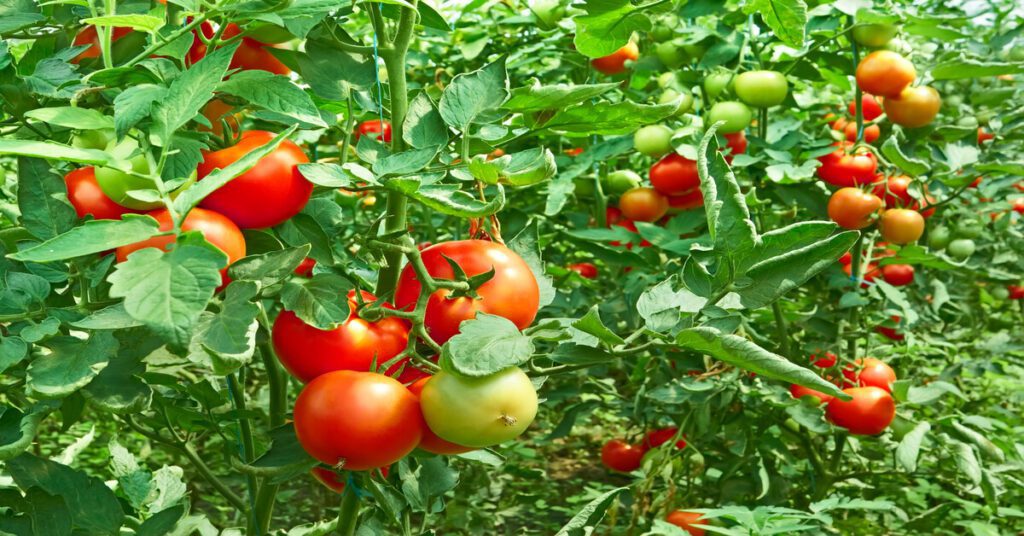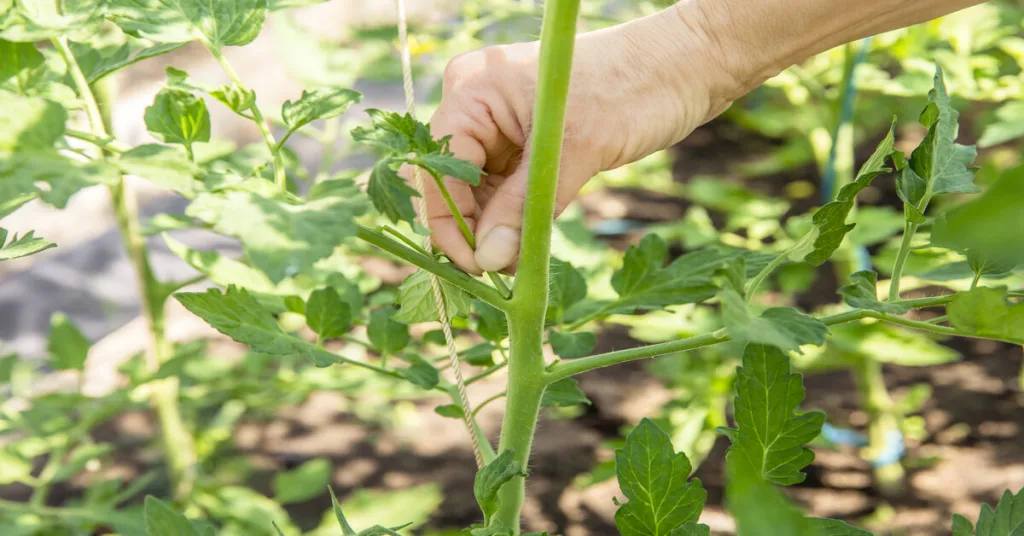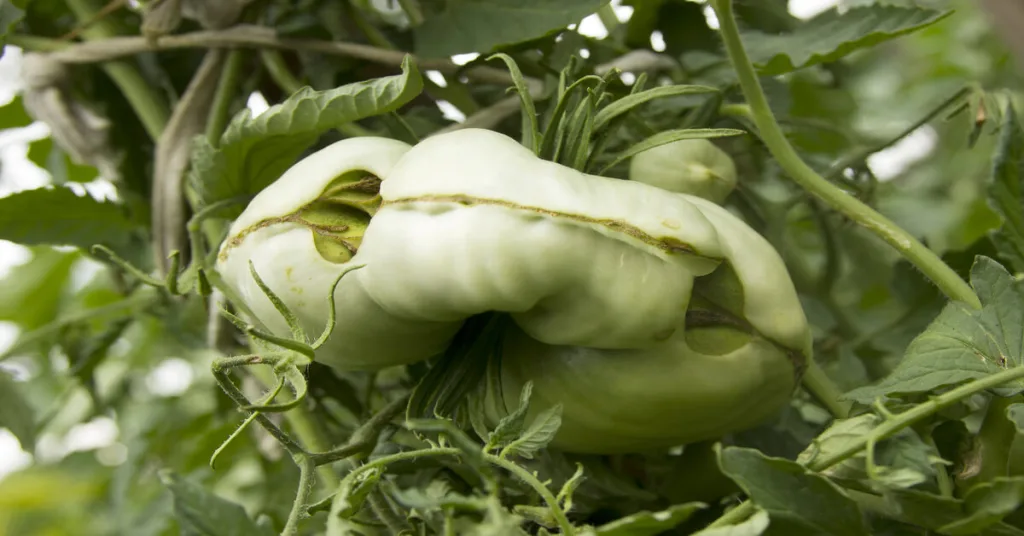Sweet juicy tomatoes (Solanum lycopersicum) are the prize of any garden. Nothing motivates people to take up gardening more than the desire to eat a tomato right off the vine. Supermarket tomatoes look perfect but often taste unripe and have little flavor.
Planting tomatoes is a great way to grow more exciting and tastier varieties, such as heirloom tomatoes. Most people are familiar with red globe tomatoes. Still, tomatoes come in various types, complex flavors, and colors (e.g., red, pink, purple, brown, yellow, orange, white, green, and even striped).
Technically considered fruits, tomatoes belong to the nightshade family of plants (Solanaceae), which includes familiar relatives such as potatoes, eggplant, bell peppers, petunia, and even tobacco plants.
Tomato Plant Care
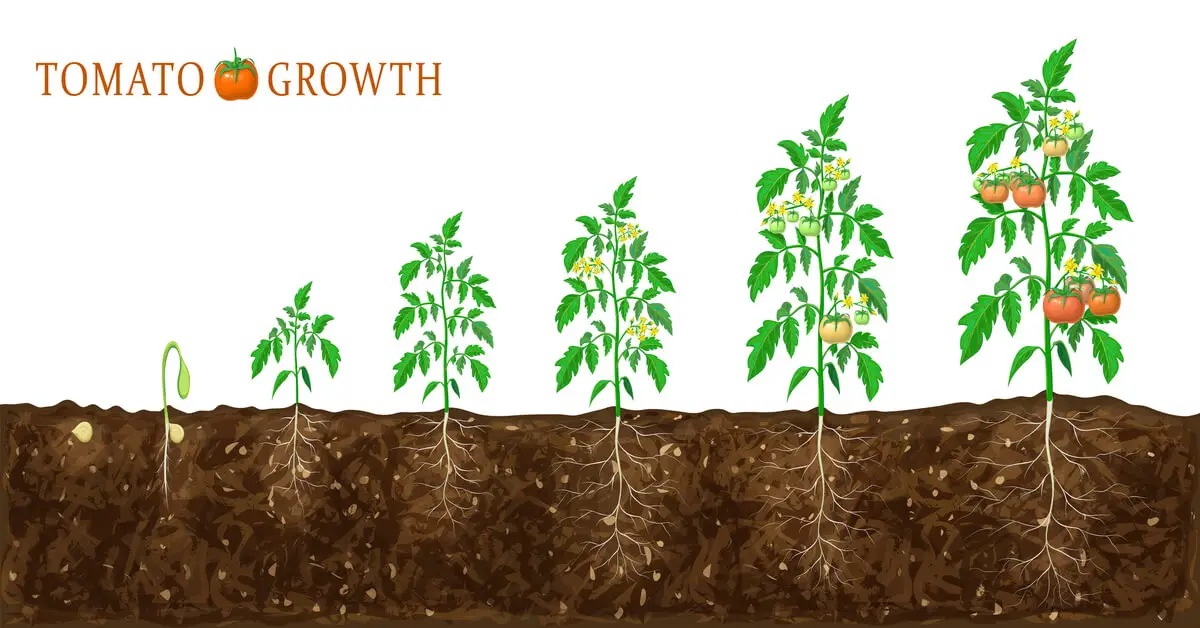
Growing tomatoes can be a rewarding experience, from the excitement of planting seeds to the satisfaction of harvesting ripe, juicy fruits. The tomato plant is one of the most popular choices for home gardening because of its taste, variety, and the fact that tomatoes are great for various dishes.
However, proper tomato plant care is essential to have a healthy, productive plant. This article teaches you how to care for tomato plants and ensure your tomato growing season succeeds.
Soil
The key to successful tomato gardening begins with the soil. Optimal garden soil for tomatoes should be loamy, rich in organic matter, and have good drainage. The pH should ideally be between 6.0 and 7.0, with a slightly acidic condition being favorable.
Before planting tomato seedlings, amend your soil with compost or well-rotted manure, providing the nutrients that tomato plants need and helping them grow healthy.
Determinate tomatoes, such as Roma or Celebrity varieties, can do well in containers. When growing in a container, ensure it’s large enough (at least five gallons) and has adequate drainage. Use a good quality potting mix in place of garden soil.
Watering
Proper watering is crucial when it comes to tomato plant care. Generally, tomatoes need at least one inch of water per week, but this can vary depending on the weather and the size of the plant. Young plants may require more frequent watering. Deep, infrequent watering is better than shallow, regular watering, as it encourages a more robust root system.
Overhead watering should be avoided with mature plants to avoid diseases such as leaf spot or blight. When you care for tomatoes, remember that they are heavy feeders and require consistent watering to prevent problems like blossom end rot, which can occur when the plant undergoes drastic moisture fluctuations.
Lighting
Tomatoes need at least six hours of sunlight daily to grow well. Eight to ten hours of daylight is ideal. Grow lights can supplement natural light when growing tomatoes indoors or starting seeds. This could be essential if you want to grow varieties that require a longer growing season than your area provides.
Humidity & Temperature
Tomatoes thrive in moderate temperatures and humidity. The ideal temperature range for tomato growth is between 60°F (15°C) and 85°F (29°C). Temperatures above 95°F (35°C) or below 50°F (10°C) can lead to problems like poor fruit set and slow growth.
Relative humidities between 50-70% are ideal, with humidities greater than 60% shown to enhance self-pollination significantly[1]. High humidity can lead to fungal diseases, while very low humidity can cause flowers to drop.
Fertilizing
Regular fertilization is vital as tomatoes are heavy feeders. A balanced tomato fertilizer high in phosphorus and potassium and lower in nitrogen can help promote fruit production over excessive foliage. Fertilize your plants quickly after transplanting and again when the fruits are about the size of a golf ball.
Diseases & Pests
Unfortunately, tomato plants can be prone to several diseases and pests. Common tomato diseases include Early Blight, Late Blight, and Fusarium and Verticillium wilts[2]. Keep plants healthy and stress-free to avoid these diseases. Remove infected plants immediately to prevent spreading.
Common tomato pests include aphids, cutworms, and hornworms. Regularly inspect your plants; organic pest control methods can keep these pests at bay. Pruning tomatoes can also improve air circulation, making it harder for pests and diseases to establish.
Days to Maturity
The “days to maturity” is crucial, especially if you have a short growing season. This refers to the number of days it takes for a plant to produce ripe fruit after transplanting. For most varieties, tomatoes begin to ripen 60 to 100 days after planting. Cherry tomatoes tend to mature earlier than larger slicing tomatoes or paste tomatoes.
How to Grow Tomatoes from Seed
Growing tomatoes from seed can be a rewarding experience. It allows you to choose from a broader range of varieties and helps ensure healthy, disease-free plants. Tomato seeds are started indoors 6 to 8 weeks before the last spring frost date.
1. Fill a seed tray or pots with a seed-starting mix.
2. Plant seeds about a quarter-inch deep.
3. Keep the soil moist and warm, around 70-80°F (21-27°C).
4. Once seeds germinate, place them under grow lights or in a sunny window.
Remember, it’s essential to give your tomato plants the care they need from the very beginning.
Planting Tomato Seedlings
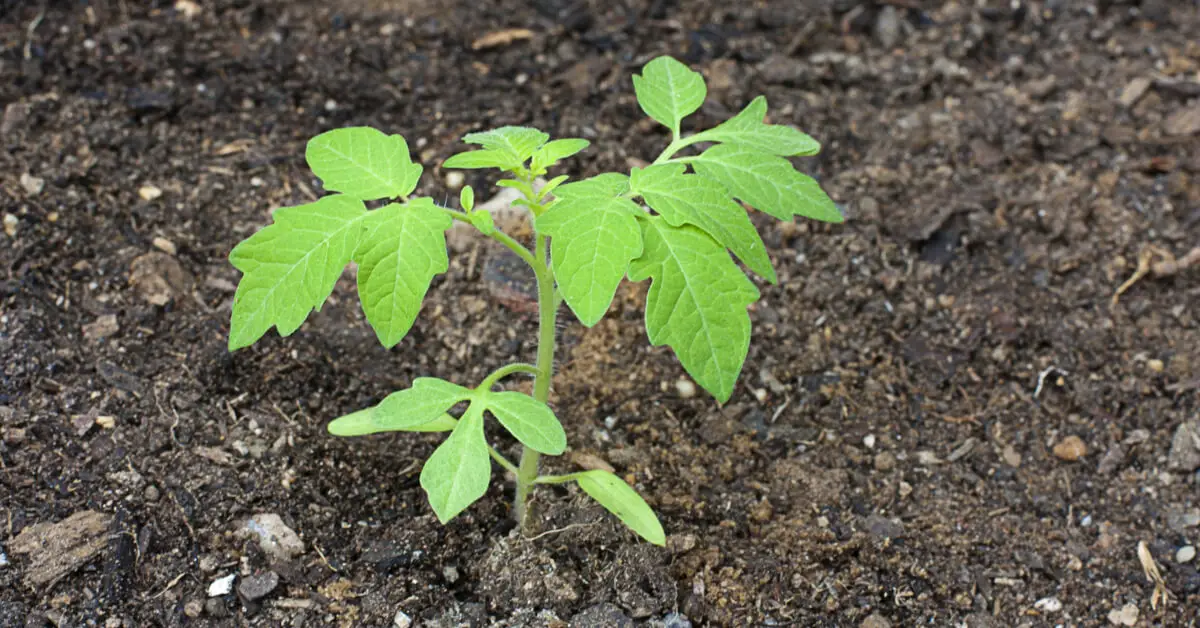
Once the risk of frost has passed and the seedlings have grown to about 5 inches tall, you’re ready to plant your tomatoes in the ground.
1. Harden off the seedlings for about a week.
2. Choose a sunny spot in your garden and dig a deep hole.
3. Remove the bottom set of leaves and place the plant in the hole, burying two-thirds of the stem. This encourages a more vigorous plant as the buried stem will develop roots.
4. Water the seedlings well after planting.
Growing Tomatoes from a Tomato
If you have a ripe tomato, you can use it to grow new plants.
1. Slice the tomato into quarter-inch thick slices.
2. Place the slices in a pot filled with compost or potting soil, then lightly cover them with more soil.
3. Keep the soil moist and in a warm area.
4. After two weeks, you should see tiny new plants. Transplant these into their pots.
Types of Tomatoes
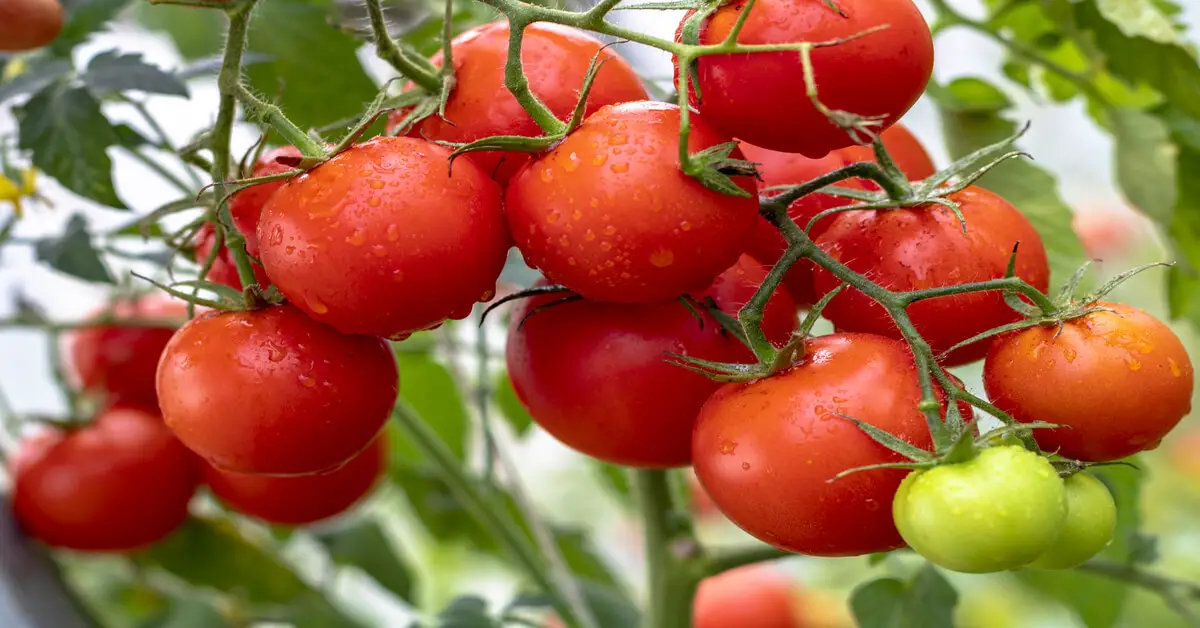
There are hundreds of types of tomatoes, but all fall into two main categories: determinate and indeterminate.
Determinate tomatoes, or bush tomatoes, grow to a certain height and stop growing. These include varieties like Roma and Celebrity.
Indeterminate tomato varieties, or vining tomatoes, continue to grow, flower, and produce fruit throughout the growing season. These include varieties like Brandywine and Cherry tomatoes.
Tomato Varieties
There are numerous tomato varieties, each with its unique characteristics. Cherry tomatoes like Sweet Million or Sungold are small but flavorful. They’re perfect for salads or snacking.
If you’re interested in larger tomatoes for slicing, varieties like Beefsteak or Brandywine could be your choice. For sauces and pastes, Roma or San Marzano tomatoes are excellent choices.
Heirloom tomatoes are varieties that have been passed down through generations. They come in a wide range of colors, shapes, and flavors.
Choosing the suitable tomato variety depends on your personal preferences and your climate. Research the types that will grow well in your conditions and meet your taste and culinary needs.
10 Most Common Problems Growing Tomatoes
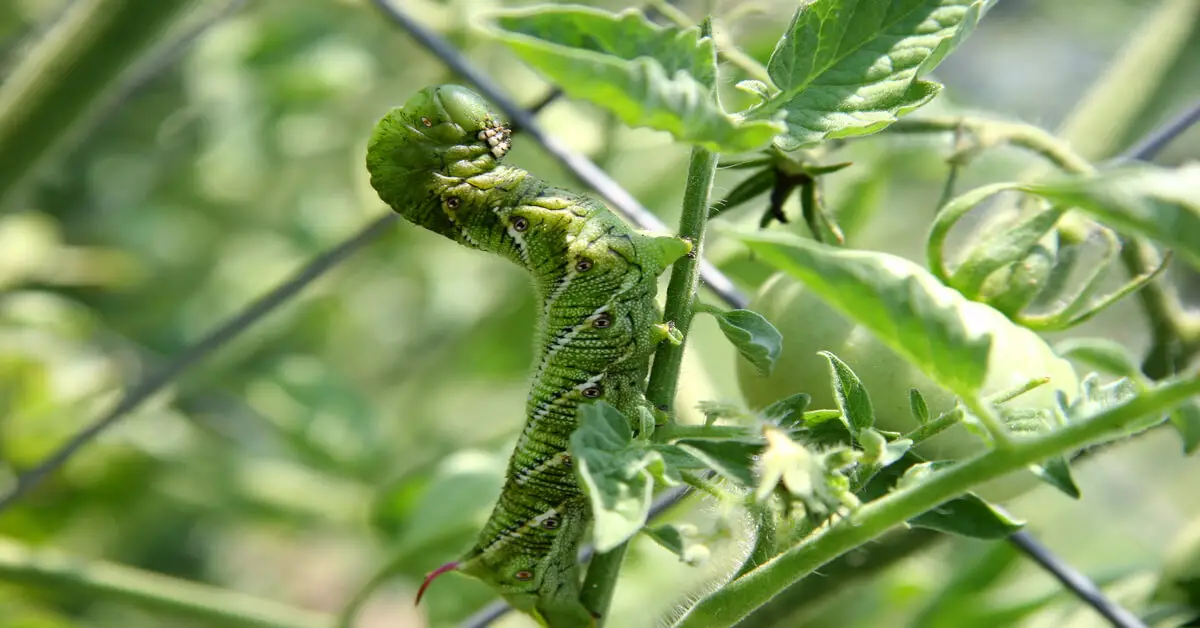
Growing tomatoes can sometimes be a challenge. Even with the best tomato plant care, you need help to grow tomato plants. Here are the ten most common problems you might encounter while growing tomatoes and the solutions to address them:
Yellowing Leaves
If you notice the leaves of your tomato plants turning yellow, this could be due to several factors, including nutrient deficiencies, overwatering, or disease. Make sure the soil has good drainage to prevent soggy roots.
Use a balanced tomato fertilizer to provide the necessary nutrients. Remove the affected leaves if a disease is suspected to avoid further spread.
Leaves Curling
Tomato leaf curl can be caused by inconsistent watering, high winds, or a viral disease called Tomato Yellow Leaf Curl Virus. To prevent this, keep your plants well-watered but avoid overwatering. Protect your plants from high winds, and practice good pest management to prevent disease spread.
Tomatoes Not Turning Red
Green tomatoes that refuse to ripen can be frustrating. Remember that tomatoes need at least six hours of sunlight daily to ripen. During colder months, you may need to pick the tomatoes and ripen them indoors at room temperature.
Blossoms Dropping
Blossom drop happens when the plant flowers, but the blossoms fall off without producing fruit. This can occur due to extreme temperatures, insufficient light, or poor pollination. Try to maintain optimal growing conditions and consider hand pollination if necessary.
Misshapen Fruit
Misshapen tomatoes can be a result of poor pollination or Blossom End Rot. Ensure your tomatoes are well pollinated by encouraging beneficial insects into your garden. Also, maintain consistent watering and consider a calcium-rich fertilizer to prevent Blossom End Rot.
Cracked Tomatoes
Cracking usually occurs when the tomato receives too much water too quickly, causing the fruit to expand and the skin to split. To prevent this, ensure consistent watering, especially as the tomatoes begin to ripen.
Tomato Pests
Common pests like aphids, hornworms, and whiteflies can cause significant damage to tomato plants. Use organic pest control methods and introduce beneficial insects that prey on these pests.
Slow Growth
If your tomato plants grow slowly, they might need more light or nutrients. Ensure they reach 6-8 hours of sunlight daily, and use a balanced tomato fertilizer to provide essential nutrients.
Wilting Plants
Wilting can signify Fusarium or Verticillium wilt, common tomato diseases. Unfortunately, there is no cure for these diseases. Remove and destroy infected plants to prevent the disease from spreading to healthy plants.
Few or Small Fruits
Insufficient sunlight, lack of nutrients, and overcrowding can lead to a disappointing harvest. Ensure your plants are adequately spaced, getting enough sun, and receiving adequate nutrients.
While these problems might seem daunting, don’t let them discourage you. You can grow a bountiful crop of delicious tomatoes with patience and proper care.
Tomato Plant Support Options
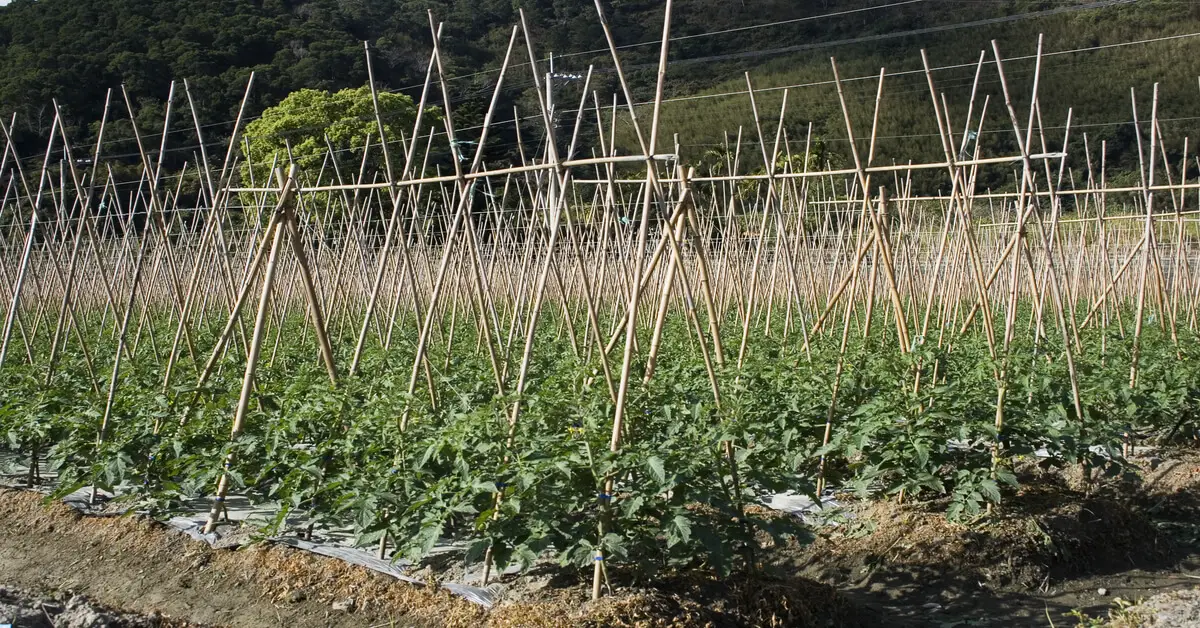
When growing tomatoes, it’s essential to consider how you will support your plants. Tomatoes are heavy feeders and prolific growers, which can lead to their downfall, quite literally, if they need to be adequately supported.
A sound support system keeps the entire plant off the ground, reducing the disease risk and making it easier to harvest tomatoes. Here are some options:
Trellis or Staking
Trellising or staking is a simple and easy-to-grow method to support your tomatoes. This approach involves driving a stake into the ground next to the plant and tying the main stem to the stake as it grows. This method works well with indeterminate varieties, which continue to grow and produce tomatoes all summer long.
Tomato Cages
A tomato cage is a cylindrical structure that you place around the plant when it’s young. As the plant grows, it’s contained within the enclosure, providing support. Cages come in various sizes and are perfect for determinate tomato varieties, which tend to be bushier and shorter. They also make it easier to spot when tomatoes are ready for harvest.
Overhead Suspension
In the overhead suspension system, also known as string trellising, you suspend a horizontal wire or line above the plants and tie a string to the base of each plant. As the plant grows, you wind it around the string. This method works best for tall, growing great, vining tomatoes.
Florida Weave
The Florida Weave, also known as the basket weave, is a system where stakes are placed between plants, and twine is woven around the stakes and the plants. It’s an efficient method for supporting many plants, keeping them upright, and making it easier for tomatoes to ripen evenly.
Japanese Ring
The Japanese Ring method involves creating a circular trellis around the plant. This is done by bending a bamboo pole into a ring surrounding the plant. As the plant grows, it’s trained to grow inside the circle. This method is perfect for both determinate and indeterminate varieties.
Each support option offers benefits, and the best choice depends on your garden, the tomato varieties you’re growing, and your preference. You will help ensure a healthy, abundant tomato crop by providing your tomatoes with the support they need.
Growing Tomatoes in Pots
If you’re short on garden space, don’t worry! Growing tomatoes in pots is a feasible and rewarding option. With the proper care, potted tomato plants can produce a bountiful harvest. Here’s how to go about it:
Choosing the Right Pot
Choose a large pot, preferably 18 inches in diameter and depth. This size allows adequate room for the roots of your tomato plants to grow and access necessary nutrients. The pot should also have drainage holes at the base to prevent waterlogging.
Selecting the Tomato Variety
While most tomato varieties can be grown in pots, determinate varieties grow best. They grow to a certain height, set fruit, and then stop growing, making them more manageable in a pot. Look for types labeled as “patio” or “dwarf” for best results.
Planting
When planting, fill your pot with high-quality potting soil. Avoid using garden soil as it can compact in pots and lead to poor drainage. Plant your tomato seedlings deep in the pot, burying up to two-thirds of the plant. This promotes strong root development as tomatoes can sprout roots throughout the buried stem.
Watering and Fertilizing
Regular watering is crucial for potted tomatoes, as they dry out faster than plants in the ground. However, be careful not to overwater, which can lead to root rot and other plant diseases. Fertilize regularly with a balanced vegetable fertilizer to provide the necessary nutrients.
Positioning
Place your pot in a location that receives at least six to eight hours of sunlight daily. Tomatoes need ample sun to grow and produce fruit. If sunlight is limited, you can supplement with grow lights.
Support
Even though you’re growing in a pot, your tomato plants need support. You can use a small trellis or tomato cage around the plant or stakes in the pot.
Regular Care
Regularly check for signs of pests or diseases. Early detection can save your plant from severe damage. Also, prune the lower leaves to keep the plant base clean and well-ventilated.
References:
[1] Shamshiri, R. R., Jones, J. W., Thorp, K. R., Ahmad, D., Man, H. C., & Taheri, S. (2018). Review of optimum temperature, humidity, and vapour pressure deficit for microclimate evaluation and control in greenhouse cultivation of tomato: a review. International Agrophysics, 32(2), 287–302. https://doi.org/10.1515/intag-2017-0005.
[2] Tong, C., Schuh, M., & MacKenzie, J. (2022). Growing tomatoes in home gardens. University of Minnesota Extension. https://extension.umn.edu/vegetables/growing-tomatoes.
[3] Kris Swartzendruber, (2022, January 21). Tomatoes provide many health benefits. Michigan State University Extension. https://www.canr.msu.edu/news/tomatoes_provide_many_health _benefits.

